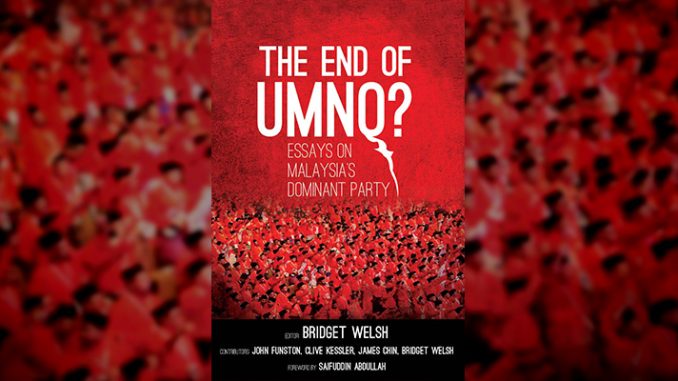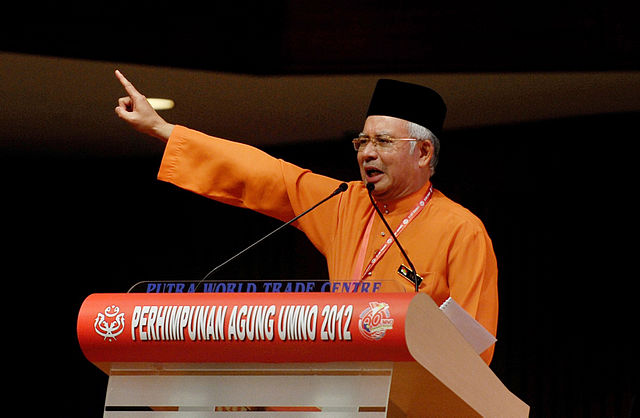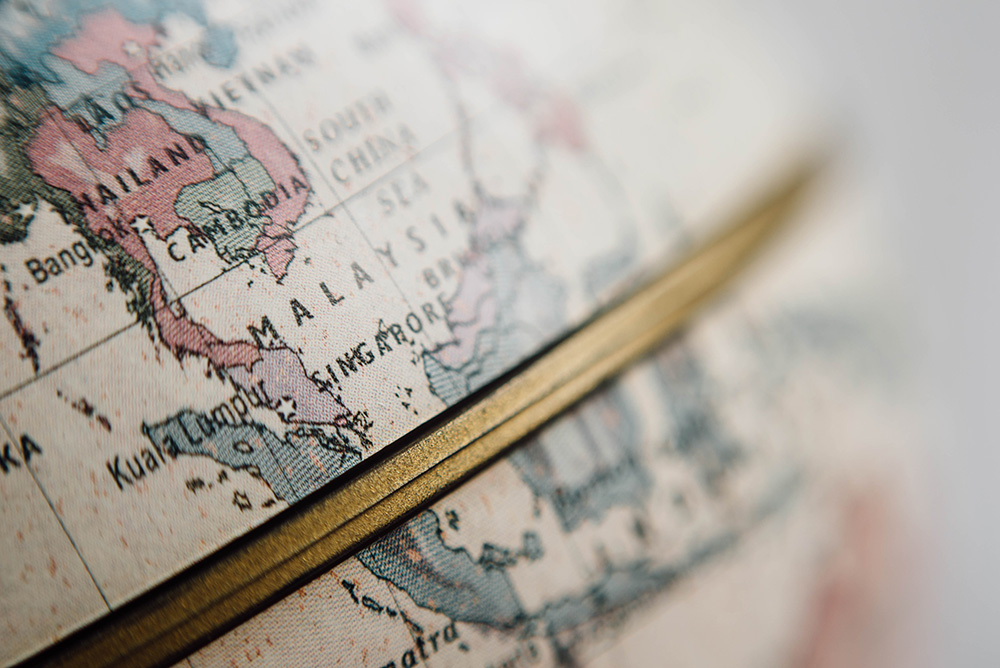
Title: The End of UMNO?: Essays on Malaysia’s Dominant Party
Author: Bridget Welsh (ed.)
Petaling Jaya, Malaysia: Strategic Information and Research Development Centre (SIRD), 2016.
UMNO (United Malays National Organisation) has been in power for almost 60 years. It is one of the world’s longest ruling political parties as Bridget Welsh, the editor of this volume, mentions. That is not all. The record is being rewritten every year as UMNO is still in power, and as such, it is one of the most talked about parties in the Asia-Pacific. It is not surprising therefore that four leading scholars along with a well-known Malaysian politician, Saifuddin Abdullah, have collaborated to produce a volume which focuses exclusively on UMNO. It is worth to note that around the time I began my PhD course in the late 1990s, there was an observation that UMNO was in crisis with mounting factional disputes. The party was dogged by the Mahathir-Anwar political feud along with a number of corruption cases. Nevertheless, there was little doubt that the party would remain in power and UMNO would overcome the crisis. Yet almost two decades on, UMNO’s crisis is wider and deeper. It is no longer unrealistic to consider the possibility that UMNO may one day be ousted from power and become an opposition party.
The authors in this volume analyse what went wrong with UMNO. Although UMNO was originally a Malay movement, current UMNO is just a political machine whose image is tarred by mind-boggling corruption cases. The first chapter by John Funston, well known for his pioneering study on UMNO and PAS (Parti Islam Se-Malaysia/ Pan-Malaysian Islamic Party), 1 describes the crisis of UMNO as follows:
The early UMNO was elitists, but left important powers in the hands of the rank and file…it supported liberal democracy…it accepted a broad racial equality through a common nationality. And it was firmly committed to a secular state… In subsequent years…UMNO moved away from its founding practices and ideals. Power became heavily concentrated in the hands of its executives… It used the bureaucracy for partisan political purposes, and engaged directly in business on a massive scale. It ceased to espouse support for democracy, pursued Malays supremacy in the place of racial equality and retreated from its commitment to a secular state. (pp. 11-12)
This short description of UMNO penetrates to the core of the UMNO crisis. This view is reflected by all contributors to this volume, including Saifuddin, who provides his own personal experience from his childhood to today as a UMNO member. At 135 pages, the chapter by Funston is disproportionately long and takes more than half of the volume, yet it carefully chronicles what happened to the ‘fallen hero’ that is UMNO. The information is so rich and thick, Funston’s chapter is able to offers readers a sound grounding on UMNO’s misdeeds without the need to go through newspapers, magazines or websites.

Photo: Wikimedia Commons
Another leading figure in the study of Malaysian and Malay politics, Clive Kessler, eloquently unravels the Malay dynamics that drove UMNO into a political corner. Kessler’s main theme is “UMNO of 1946 vs. UMNO of 1957”. The former “was a party that came together…to save what was then understood as the Malay stake in the country. It came together and rose up to save the Malays politically”. (p. 148) Meanwhile, UMNO of 1957 is,
…the UMNO of interethnic conciliation and cooperation and political convergence…in the pursuit of independence for a sovereign political nation consisting of all the land’s people… It was an UMNO that looked forwards, and even took the lead in looking forward, to a future – a common and inclusive future – that had to be fashioned and shaped and won, together. (pp. 148-149)
UMNO of 1957 sounds more politically correct than UMNO of 1946 with its narrower ethnic concerns. Kessler’s analysis, however, is very sober as he suggests that UMNO today has to carefully combine the UMNO of 1946 and the UMNO of 1957. While the UMNO of 1957 is ideal, the political reality of the Malay community on which UMNO is based does not simply allow UMNO to be politically correct.
Kessler proves his point on why today’s UMNO should not forget the UMNO of 1946. In the earlier days, it was the Pan-Malaysian Islamic Party (PAS) that set the pace of Islamic credentials in Malay politics. UMNO had to strive to keep the pace set by the PAS. In recent years, however, it was a section of the rather traditional UMNO support base that put pressure on UMNO, thus making it more focused on the narrower Malay and Islamic causes. These organisations, as Kessler lists them, include the “Malay Islamist pressure group (or so-called NGOs)” such as ISMA (Ikatan Muslimin Malaysia/ Malaysian Muslim Society), Pekida (Pertubuhan Kebajikan dan Dakwah Islamiah Se-Malaysia) and Perkasa (Pertubuhan Bribumi Perkasa/ Mighty Native Organisation) (p. 161). The question for UMNO today is to find an ideal mix of UMNO 1946 and of UMNO 1957, Kessler prescribes.
Not only do Malays matter, but so do the ethnic Chinese in Malaysia. Chinese political power is less significant than that of the Malays, but it cannot be ignored by political parties intending to rule in Malaysia. James Chin, a long-time observer of Chinese politics in the country, discusses the relations between UMNO and the Chinese constituency, which, he argues, is full of contradictions, dilemmas, as well as love and hate. Chin sums up the basic dilemma that UMNO has in its relations with its Chinese constituents as follows:
On the one hand, UMNO wanted strong Chinese representation via Malaysian Chinese Association (MCA) and Parti Gerakan Rakyat (Gerakan), to show the world that it was leading a multiracial coalition… On the other hand, policies pursued by UMNO…caused Chinese and non-Malays to run to the opposition parties, causing the electoral support for the MCA and Gerakan to collapse, thus losing both parties their political legitimacy as the Chinese representatives in the BN coalition government. (p. 172)
This is not just a political dilemma that UMNO has been facing. This is a fundamental contradiction in Malaysian politics. Chin goes on to show how the Chinese hopes and fears towards UMNO leaders – including the country’s Prime Ministers – have waxed and waned. The net consequence of the political development, to quote Kessler, was that “GE13 (General Election 13) produced a transformed situation. Barisan Nasional (BN), [a right-wing political party in Malaysia], emerged even weaker than it had from GE12 (General Election 12), but UMNO was now far stronger.” (p. 164) While UMNO became more radical, it could amass Malay support, but Chinese-based BN parties, MCA and Gerakan, lost support from the Chinese community. As the presence of MCA and Gerakan in BN got weaker, UMNO’s power got even stronger.
More importantly, the nature of those Chinese-based parties fundamentally changed. Now, the parties are more akin to community service organisations rather than political parties fighting for Chinese political and economic interests. Chin conveys a remark by a prominent Chinese politician and MCA president, Ong Tee Keat, saying “There was once a day in Malaysia when MCA would get the left-overs, but now we are just hoping to get some crumbs from the UMNO table.” (p. 212). The problem for the parties, again quoting Ong, is “we (the Chinese) are marginalized, big business to small stall owners know that – but MCA cannot admit it.” (p. 212)

Last but not least, Bridget Welsh observes what went wrong with UMNO from an angle of power concentration and corruption. She argues,
“UMNO has moved away from its grassroots foundation to become a more elitist, centralised and inward-looking institution without the same level of connectivity with Malaysian society, including Malay society.” This is largely due to the recent leadership of the party who “left their own imprint on the party, while failing to bring about fundamental reform that could have improved the party’s public standing.” (pp. 214-215)
Welsh suggests some prescriptions for the “fallen hero”, UMNO. She argues,
“The first of these is a call for new leadership inside UMNO, especially at the centre… Second, there is a need to introduce measures that reverse the centralisation of power inside UMNO and nationally in the executive… Third…money politics call out for meaningful campaign finance reform and tougher more holistic enforcement against corruption and abuses of power… Finally, UMNO ahead needs to identify new sources of political legitimacy.” (pp. 250-251) Anyone who closely follows UMNO politics would have agreed with all of these prescriptions. UMNO, however, could not initiate those very apparent reform measures and “At 70, UMNO has fallen from grace.” (p. 252)
Is it right to analyse Malaysian politics and UMNO factionalism from an ethnic politics perspective? Of course, ethnic politics has been the mainstream analysis of Malaysian politics. There are, however, different approaches as well – notably political economy or class analysis. 2 In short, the 1969 ethnic riot, for example, is not a case of ethnic clash, but it was fundamentally a case of class struggle. Malaysian political elites were able to camouflage the class element and reduce the 1969 riot to an ethnic clash which was closer to the heart of the people and thus more inflammable. The End of UMNO: Essays on Malaysia’s Dominant Party offers a better understanding on how the ethnic element in Malaysian politics is real. It has not faded despite the political, economic and social changes that Malaysian society has seen and despite the rhetoric adopted by the ruling party, UMNO, including Bangsa Malaysia and One Malaysia, or by the opposition’s multiethnic and multicultural commitment.
Reviewed by Jaehyon Lee
Asan Institute for Policy Studies, Seoul, South Korea
Dr. Jaehyon Lee is a Senior Research Fellow and the Director of the ASEAN and Oceania Studies Program at the Asan Institute for Policy Studies in Seoul, Korea.
He received his Ph.D. in Politics from Murdoch University where his dissertation was entitled, “UMNO Factionalism and the Politics of Malaysian National Identity.”
Notes:
- ohn Funston. 1980. Malay Politics in Malaysia: A Study of the United Malays National Organisation and Party Islam. Kuala Lumpur: Heinemann Education Books. ↩
- Notable examples of this perspective include S. Husin Ali (ed.), Ethnicity, Class and Development in Malaysia (Kuala Lumpur: Persatuan Sains Sosial Malaysia, 1984); K.S. Jomo, (A Question of Class. Singapore: Oxford University Press, 1986); Joel S. Khan, “Class, Ethnicity and Diversity: Some Remarks on Malay culture in Malaysia” in Joel S. Khan and Francis Loh Kok Wah (eds.), Fragmented Vision: Culture and Politics in Contemporary Malaysia (Honolulu: University of Hawaii Press, 1992). ↩
